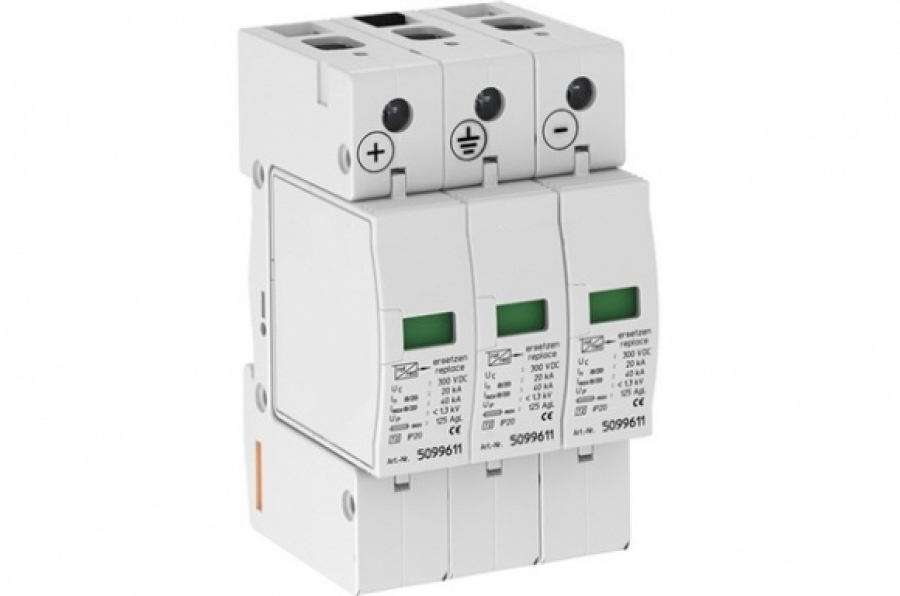
How to Choose the Right Surge Arrester?
Surge arresters that protect electronic devices and systems against high voltages are widely used as electrical protection systems. Full protection against high voltage pulses can only be achieved by using these equipment correctly. For this reason, it is very important that surge arresters are selected in accordance with our facilities or structures.
With the increasing awareness of internal lightning systems, the idea that the market share in the sector has increased has brought different searches to the agenda. Therefore, it is inevitable to be faced with a process in which alternatives on this subject are gradually increasing. It is impossible to say that there is a drawback to the increase of products in similar segments in a product group or the numerical increase of different alternatives, provided that segmentation definitions are made correctly... However, the fact that the situations that lead to concept confusion are in parallel with this increase can make the subject annoying.
Why should a surge arrester be used?
There are electrical protection systems designed to protect the devices and system against high voltages and lightning strikes coming to buildings and facilities. One of these protection systems is surge arrester. The surge arrester gradually reduces the large current pulses and transmits them to the ground. It also prevents power interruptions that may occur due to high voltage where it is used and reduces the high voltage to a level that will not harm the network. Thus, we safely transmit a high voltage pulse coming to our facility to the ground by damping and neutralising it. This is of great importance in terms of facility safety and business continuity.
Surge arresters provide a safe working environment by protecting the system to which they are connected from the effects of switching elements, harmonics and voltage fluctuations that cause sudden voltage pulses.
What should be considered in surge arrester selection?
Surge arresters prevent damage to the devices and systems they are responsible for protecting by switching off in the system. In order for surge arresters to protect by switching off, the operating voltage must be lower than the voltage value determined on the part with the weakest insulation point on the system it protects. If the voltage value is high, the surge arrester will not be able to switch off and prevent damage to the system to which it is connected for protection.
Especially in class B (10/350) products, the lack of technical equivalents of the concepts specified in the market and in many technical specifications has started to create problems from time to time. The lack of a parallelism between the technical data stated on the labelling values and the technical data added to the general discourse is an important handicap for the customer. Let's take a brief look at what kind of drawbacks this may have:
1- Under normal conditions, the kA value in surge arresters is given separately for each line. For example, when a definition and demand such as 100 kA arises in a product, it is very difficult to find the equivalent. Because there are different units such as In (nominal pulse current value), Imax (maximum pulse current value) It (total current value) in a product. It should be accepted that all technical specifications are written based on the nominal current value. Because there is no value such as Imax in class B products. Therefore, looking at the In level per phase can help to avoid all misunderstandings.
2- It is a big problem that the Up value is never mentioned. Because this is the point where we can see the main function of the surge arrester. In other words, we can understand the level at which the resulting lightning voltage is reduced.
Far from all these technical data, offering different products to the same demand takes its place on the agenda as an issue that should be considered for the user. Because especially nowadays, there may be a situation such as trying to make sales with different technical data during 100 kA demands at the level we call B + C. When a demand is made on the technical value of a B + C product, the product in question is the technical value of the B class. For example, when a 100 kA B + C class surge arrester is requested, you must be offered a product with at least 100 kA as the neutral value In of class B. However, when a product with an Imax value of 100 kA is recommended, there is no possibility that the product in question is a value belonging to class B.
It is very important to consider whether the purchased surge arrester can meet the need and to look at the In level of the same class when making a comparison between surge arresters. Otherwise, it may be inevitable to be deceived as well as paying much more than necessary for the product that he thinks he bought at an affordable price.